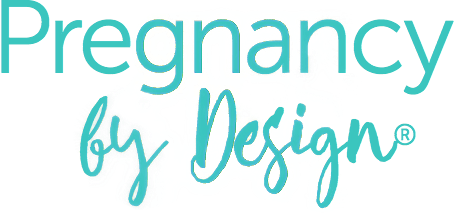With the increase in COVID-19 cases, added pressure on hospital systems as policies change daily, and an increased interest in out-of-hospital birth, Midwives have stepped up to help women safely deliver their babies. Some Midwives have even come out of retirement to meet the need.
While all populations have been affected by the pandemic, those that are pregnant who chose to birth in the hospital truly are the most susceptible as they are the only ones that are not sick.
During a crisis, such as COVID-19, having the option to birth out of the hospital, becomes critically important for multiples reasons including:
- Reducing the risk of spreading the virus
- Making the most efficient use of medical resources
- Reducing hospital overcrowding
- Maintaining health in moms and babies
- Being able to have support persons such as spouse and/or doula* at birth
(*The continuous support of a doula has been shown to reduce the risk of cesarean birth in full term births by anywhere from 28% (Hodnett et al., 2012) to 56% (Kozhimannil et al., 2016) in full term births.)
Crisis or no crisis, research shows that Midwives provide individualized family-centric care and overall better birth outcomes.
What the World Needs Now – Midwives
As more families seek to switch from a hospital to an out-of-hospital birth setting, the skills of Midwives with expertise in out-of-hospital birth have become invaluable.
Midwives have supported expectant families in pregnancy and childbirth for centuries. They are experts in normal pregnancy and birth and practice under the midwifery model of care.
Studies have found that low-to-moderate risk pregnant women who receive midwifery care (or have access to collaborative care that integrates Midwives) are more likely to experience a low-intervention, spontaneous vaginal birth, be satisfied with their care and are less likely to have a first cesarean delivery – which improves outcomes for subsequent births.
Although the majority of Midwives practice in the hospital setting, Midwives are the most common out-of-hospital maternity care providers.
In the U.S., there are several types of Midwives that meet all of the educational requirements of the ICM (International Confederation of Midwives). These include Certified Nurse Midwives (CNM’s), Certified Midwives (CM’s), and Certified Professional Midwives (CPM’s). Each of these are able to deliver in the out-of-hospital setting but the birth places they work in depend on their training and expertise.
Rising to the challenge
Midwives have been working overtime to keep their clients up-to-date on the latest COVID-19 information as it relates to pregnant women and hospital policy changes affecting their clients. They are utilizing multiple channels including email, social media, telemedicine and facebook live where education and teaching are provided and questions are being answered. They are also working hard to help support clients who are considering switching from a hospital birth to a birth center or home birth.
Doulas across the globe are also rising to the challenge. As many hospitals have begun to restrict doulas from supporting their clients in the hospital, many have begun offering virtual doula services and post daily words of encouragement and affirmation to keep expectant families calm.
Midwives and Out-of-Hospital Birth
In the U.S., Midwives attend 8% of births, the majority of those births occur in the hospital. That is due to the fact that 98.8% of births take place in the hospital, while 0.3% of births occur in birth centers with a little less than 1% being born at home.
Approximately 85% of those who give birth in the hospital are considered low-risk and are candidates for a home or birth center birth.
Research shows that planned out-of-hospital birth is a safe option for low-risk women who are cared for by professional Midwives that are connected within a responsive healthcare system (Source).
The AABC (American Association of Birth Centers) states that low-risk candidates are: singleton pregnancies that are full term with baby’s head down (not in a breech position). Moms should also be free of other medical conditions like insulin-dependent diabetes or high blood pressure.
Homebirth Research:
- A large international study in 2018 of over 500,000+ planned homebirths shows that low risk pregnant women who intend to give birth at home have no increased chance of the baby’s perinatal or neonatal mortality compared to low risk women who intend to give birth in a hospital. The study also found that in well-integrated settings, homebirth appeared to lead to better perinatal outcomes.
- In 2014 the Journal of Midwifery & Women’s Health published a landmark study (the largest published in the U.S.) that showed among 17,000 planned home births among low-risk women resulted in lower rates of interventions without an increase in adverse outcomes for moms and babies.
Birth Center Research:
- In a study of 65,000 conducted by Birthplace In England Collaborative Group found that those in birth center care were less likely to have a cesarean birth, intervention of forceps or vacuum delivery, or episiotomy. Additionally, there was no increased risk of mortality or major complication compared to hospital births.
- The largest study at present collected data from 2007-2010 from 15,000+ women who had planned a birth at a midwifery-led freestanding center birth across 33 states. The study found that 92.8% achieved a normal spontaneous vaginal delivery, only 6.1% had a cesarean delivery, and 84% of women gave birth at the birth center with 12.4% transferred after they were admitted. There were zero maternal deaths.
Could COVID-19 bring much needed change to the U.S. Maternal Health Crisis?
The over medicalization of birth in the United States has led to undesirable birth outcomes. Here a just a few of those outcomes:
- The U.S. is the only country in the developed world with a rising maternal death rate; women today are 50% more likely to die in childbirth than their mothers. In a recent report from the CDC and Prevention’s National Vital Statistics System, the 2018 maternal mortality rate puts the U.S. in 55th place among other countries. If only comparing the U.S. to 10 other similarly wealthy countries, the U.S. would rank 10th.
- 32% have cesarean sections, this is double the World Health Organization’s recommended rate of 10-15%
- 22,000 babies die before their first birthday
- One out of three experience birth trauma following their deliveries
These statistics shed light on the fact that the U.S. maternity care system was in crisis long before the Covid-19 pandemic.
As many families frantically try to transfer to an out of hospital birth, they may find some difficulty in securing a provider. Most countries outside of the U.S. use Midwives as their primary providers for expectant families, reserving Obstetricians for high-risk or more complicated cases. In the U.S., Obstetricians deliver over 90% of the babies.
The Covid-19 pandemic should bring to light that fact that the U.S. desperately needs more Midwives – and in order to do so we need to make more midwifery programs readily available. We see that in countries where integrated models of midwifery care exist, as outlined by the International Confederation of Midwives, both maternal and newborn outcomes improve.
Serendipitously 2020 has been deemed the Year of the Nurse and the Midwife, and given this pandemic it may just be the year that elevates the work that Midwives have been doing for centuries.
At Pregnancy By Design we support birthworkers with Patient Communication, Patient Acquisition, and Patient Engagement tools and resources.
If you are Midwife, Hospital, Birth Center, or a Doula and would like more information about our HIPAA compliant digital communication programs, telehealth, secure text messaging, digital childbirth education, social media integration or would like to become a Pregnancy by Design Preferred Provider, email us at [email protected]
Learn More About our Programs
For Moms For Doulas For Providers
Cited Research
American Association of Birth Centers. (2017). Standards for Birth Centers. Retrieved from https://cdn.ymaws.com/www.birthcenters.org/resource/resmgr/AABC-STANDARDS-RV2017.pdf
American College of Nurse-Midwives. Midwifery: Evidence-based practice. https://www.midwife.org/ACNM/files/ccLibraryFiles/Filename/000000002128/Midwifery%20Evidence-based%20Practice%20Issue%20Brief%20FINALMAY%202012.pdf
Cheyney M, Bovbjerg M, Everson C, Gordon W, Hannibal D, & Vedam S. Outcomes of care for 16,984 planned home births in the United States: The Midwives Alliance of North America Statistics Project, 2004-2009.
Hutton E., Reitsma A., Simioni J., Brunton G., Kaufman K. Perinatal or neonatal mortality among women who intend at the onset of labour to give birth at home compared to women of low obstetrical risk who intend to give birth in hospital: a systematic review and meta-analyses. EClinicalMedicine. 2019; 14: 59-70
Hodnett, E. D., S. Gates, et al. (2012). “Continuous support for women during childbirth.” Cochrane Database of Systematic Reviews: CD003766.
Kozhimannil, K.B., R. R. Hardeman, et al. (2016). “Modeling the Cost-Effectiveness of Doula Care Associated with Reductions in Preterm Birth and Cesarean Delivery.” Birth, Volume 43, Issue 1.
Hoyert DL, Miniño AM. Maternal mortality in the United States: Changes in coding, publication, and data release, 2018. National Vital Statistics Reports; vol 69 no 2. Hyattsville, MD: National Center for Health Statistics. 2020.
Li, Y, Townend, J, Rowe, R, Brocklehurst, P, Knight, M, Linsell, L, Macfarlane, A, McCourt, C, Newburn, M, Marlow, N, Pasupathy, D, Redshaw, M, Sandall, J, Silverton, L, Hollowell, J. Perinatal and maternal outcomes in planned home and obstetric unit births in women at ‘higher risk’ of complications: secondary analysis of the Birthplace national prospective cohort study. BJOG 2015; 122: 741– 753.
Scarf V.L., Rossiter C., Vedam S., Dahlen H.G., Ellwood D., Forster D. et al. Maternal and perinatal outcomes by planned place of birth among women with low-risk pregnancies in high-income countries: a systematic review and meta-analysis. Midwifery. 2018; 62: 240-255
Stapleton SR, Osborne C, Illuzzi J. Outcomes of care in birth centers: Demonstration of a durable model. Journal of Midwifery and Women’s Health. 2013. Available at: http://onlinelibrary.wiley.com/doi/10.1111/jmwh.12003/full.



 Tips for Help Dealing With Pregnancy Morning Sickness
Tips for Help Dealing With Pregnancy Morning Sickness






Leave a Reply